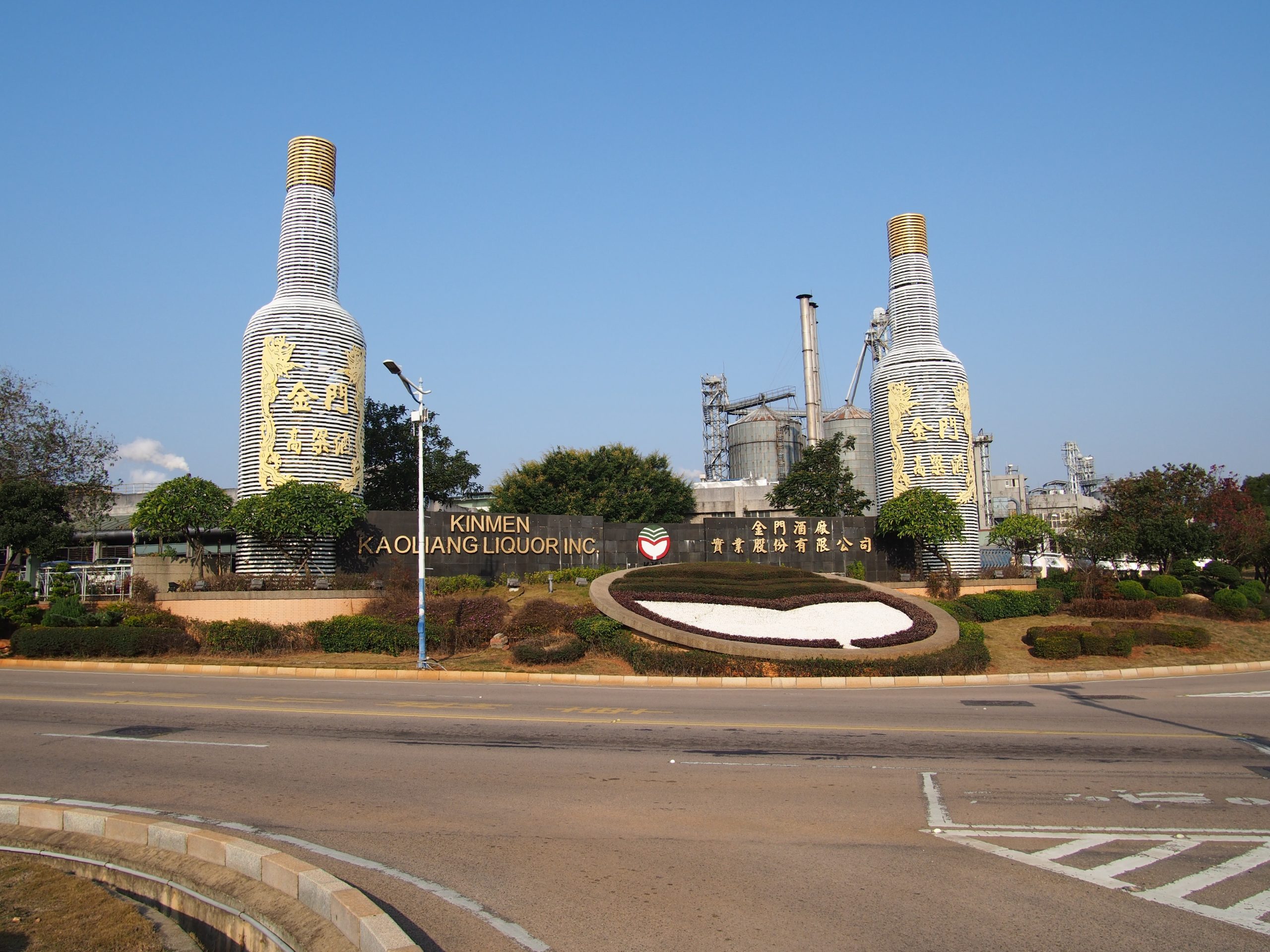by Brian Hioe
語言:
English
Photo Credit: rheins/WikiCommons/CC BY-SA 3.0
FOLLOWING A MEETING between Kinmen County magistrate Chen Fu-hai and newly appointed Taiwan Affairs Office director Sung Tao late last month, the Chinese government has relented on its import ban on Kaoliang produced by Kinmen Kaoliang Liquor Incorporated.
Kinmen Kaoliang brews Kinmen’s iconic alcoholic beverage and is owned by the Kinmen County government. Chen is a pan-Blue independent who won in the 2022 election, but previously served as Kinmen County magistrate from 2014 to 2018, while Sung Tao took up his appointment in December.
Kinmen Kaoliang was among the Taiwanese products hit by bans from the Chinese market in December last year. In particular, the Chinese government was likely targeting Taiwanese products that had significant symbolic value. As such, it was not surprising that iconic brands such as state-owned Taiwan Tobacco & Liquor Corporation, which manufactures Taiwan Beer, and King Car, which produces the internationally award-winning whisky line, Kavalan.
To this extent, it is clear why Kinmen Kaoliang would be targeted, as Taiwan’s most recognizable national hard liquor. For its part, the Chinese government claimed to be enforcing a new labeling system that had been introduced earlier in the year, but Taiwanese companies often claimed to have already submitted the required information.
After the meeting, China’s General Administration of Customs issued a Customs Registration Code for Kinmen Kaoliang. This allows Kinmen Kaoliang to resume exports to China near the end of January.
It is not surprising that the Chinese government relented on the issue of Kinmen Kaoliang either. Namely, the Chinese government has sought to win over outlying islands of Taiwan through tourism and by stimulating economic links. It is a matter of significant concern for Taiwan that China may be able to change public opinion in outlying islands to sway them in favor of unification, given the security risks to the rest of Taiwan if this were to take place. As of late, some Kinmen politicians, likely with a pan-Blue slant, have taken to calling for Kinmen to become a demilitarized zone–perhaps with the aim of framing the pan-Blue camp as the political force in Taiwan that hopes for peace while framing the pan-Green camp as dangerous warmongers.
Before the start of COVID-19, the Chinese government placed a great deal of priority on the use of tourism as a means of trying to convince Taiwan that its economy had become dependent on trade with China. This was used as a political threat, with the suggestion that China could “shut off” the flow of tourists to Taiwan and impact its economy if the Taiwanese public voted for a pan-Green presidential administration.
Few would deny that the Taiwanese and Chinese economies are significantly integrated, certainly. But after the COVID-19 pandemic, with the suspension of tourism to Taiwan as a whole, this seems to disprove the claim that Taiwan’s economy is reliant on the Chinese economy by way of tourism.
But on the outlying islands of Taiwan, one can see how China’s efforts in this vein continue. It is such that KMT and pan-Blue politicians have continued to call for the quick reopening of transportation and trade links between Taiwan and outlying islands by way of the “three mini-links”, though one notes that the high infection rate for COVID-19 in China could stress the medical capacity of such outlying islands.
So it is, however, that the resumption of Kinmen Kaoliang exports may not be surprising. By allowing for this, the Chinese government is attempting to signal that it may potentially retaliate against Taiwanese companies but that it will make allowances for companies willing to engage in dialogue with it–or through putting their support behind pan-Blue politicians that can conduct such negotiations on their behalf.
This also marks how Chinese efforts at economic outreach toward Taiwan–using a combination of a velvet glove and iron fist approach–continue. The use of such tactics may be of greater intensity when directed at the outlying islands of Taiwan, which have significantly stronger trade and tourism links with China due to proximity; the Chinese island of Hainan is visible from Kinmen, for example. Yet the Chinese government may continue with such efforts more generally for Taiwan as a whole.
This takes place even as it is unclear whether the high rate of COVID-19 infection from China will affect perceptions of China in Taiwan. Panic-buying of Panadol shows that this is of concern to society in Taiwan, though pan-Blue politicians have continued to emphasize what they view as the need to reestablish economic links with China.



